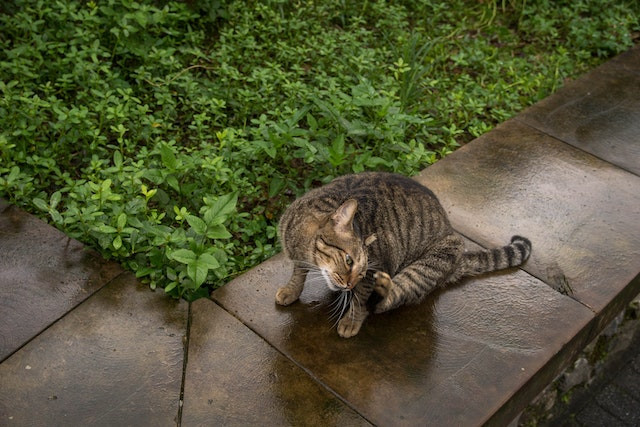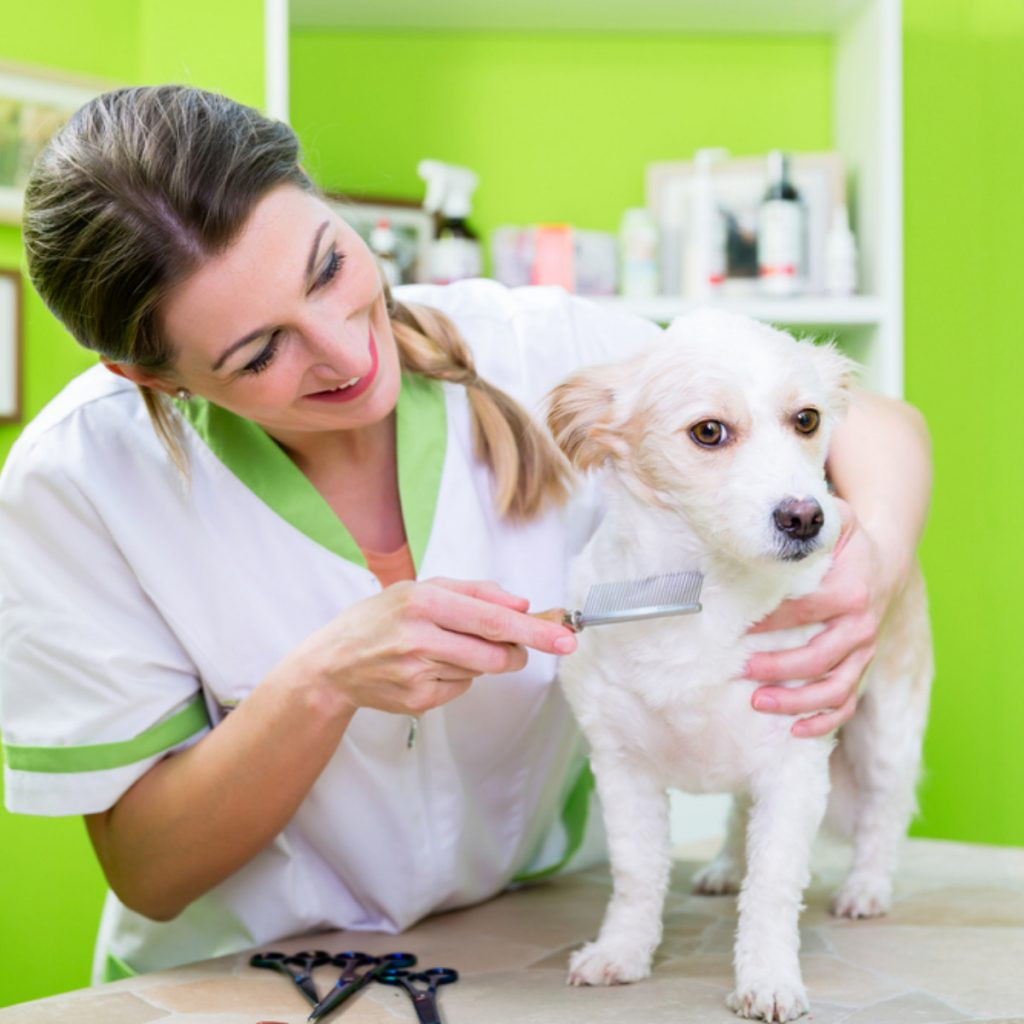After a fun adventure in the great outdoors, it’s common for our beloved pets to bound back inside, tails wagging and tongues lolling. Everything seems perfect until you notice them scratching incessantly, attempting to relieve an irritating itch. Uh oh! It looks like your furry friend has picked up fleas!
This leads to a pressing question for many pet owners: How do these unwelcome pests find their way onto our dogs and cats? Do fleas simply hop from the grass onto our animals? Or, more specifically, do fleas fly?
In this article, we’ll delve into the world of fleas, explaining exactly how they target your pets and provide practical advice on tackling a persistent flea problem in your home.
Do Fleas Bite Humans Too?
Discovering fleas on your pet after they’ve been exploring outside is almost an expected part of pet ownership. But what about humans? Can fleas transfer from our pets and bother us? Do fleas fly from our pet’s fur and land on our skin and hair?
 Cat intensely scratching its neck
Cat intensely scratching its neck
Fleas are parasites that rely on the blood of mammals for reproduction. A blood meal from a host is essential for adult fleas to lay eggs. They even deposit their eggs on your animals, ensuring a readily available food source for their offspring once they hatch.
Interestingly, young fleas don’t feed on blood. Instead, they consume “flea dirt,” which is the fecal matter produced by adult fleas. This flea dirt is a crucial food source for larvae, enabling their survival and growth.
But do fleas fly to humans and bite them as well? It’s easy to feel a sympathetic itch just watching your dog or cat scratch! While fleas definitely prefer animal hosts, they are not strictly exclusive and can bite humans.
In cases of a significant flea infestation, these pests can readily move between hosts. Fleas won’t lay eggs on humans, but they can and will bite us. Flea bites are typically small, red, and intensely itchy. You’ll often find these itchy marks clustered together, particularly around the legs and ankles, unlike mosquito bites which can appear seemingly anywhere on the body.
How Does a Flea Infestation Start?
You might be scratching your own head (and maybe your legs too!) trying to figure out how fleas managed to invade your home. Precisely how do fleas hitch a ride on our pets? And do fleas fly around indoors or outdoors to spread?
As your pets explore the outdoors, fleas have ample opportunity to jump onto them and begin feeding. Fleas are commonly found in overgrown, grassy environments, but they can just as easily thrive in a meticulously maintained lawn. When wild animals, neighboring dogs, or roaming cats pass through your yard, they can introduce fleas to your property. If your dog or cat enjoys an afternoon nap in a shady spot outside, they become an easy target for fleas searching for their next meal.
While fleas prefer to stay on a host for consistent access to food, they can also infest other areas. These pests can establish themselves in bedding, carpets, rugs, and furniture, continuing to breed and spread throughout your home.
Do Fleas Fly or Jump to Get Around?
So, getting back to the main question: do fleas fly, or do they use another method to attach themselves to your pets?
Instead of wondering, “Do fleas fly?” the more relevant question is: how far can fleas jump? Unlike many other insects, fleas are flightless. Adult fleas lack wings entirely. While their rapid jumps might give the illusion of flight, fleas are limited to hopping.
According to the Entomology Department at the University of Kentucky, fleas are capable of jumping up to six inches high! While this isn’t as impressive as a grasshopper’s jump, it’s more than enough for these tiny pests to leap onto your pets.
[Watch a video demonstrating the impressive jumping ability of fleas!] (replace with actual video link if available and relevant)
If your pet didn’t pick up fleas from your yard, they might have encountered them in other infested environments like veterinary clinics, grooming salons, pet daycares, or training facilities. When flea-infested animals visit these places, they can easily transmit fleas to other pets.
 Groomer examining a dog, questioning "Do fleas fly at the groomers?"
Groomer examining a dog, questioning "Do fleas fly at the groomers?"
Effective Flea Control: Getting Rid of Fleas
Once a flea infestation takes hold in your home, the most effective way to eliminate these pests is to address the problem directly on your pets. Begin by treating your dogs and cats with flea treatments designed to kill adult fleas and prevent egg-laying on their skin.
Various flea treatment options are available, including medicated shampoos, topical solutions, and oral medications. The best choice often depends on the severity of the infestation. Oral medications, such as chewable tablets or pills, can frequently provide rapid relief without the hassle of bathing a resistant cat!
After treating your pets, turn your attention to eliminating fleas within your home environment. Wash any clothing or linens that might harbor fleas to remove any hiding pests.
You can also use indoor flea control products. However, some of these treatments require thorough cleaning of carpets and furniture, which can be time-consuming and disruptive. For a more convenient and effective solution, consider professional pest control services. Many companies offer specialized flea treatments to rid your home of these persistent insects.
Professional technicians will assess your home and apply targeted insecticides that eliminate adult fleas, larvae, and eggs. With professional treatment, you can effectively break the flea life cycle and prevent future infestations, ensuring a flea-free home for you and your pets. [Contact a local pest control service today for assistance.] (adjust call to action to be more generic and less specific to “proof. pest”)